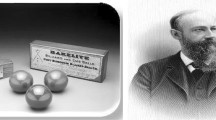Abstract
The objective of this study was to identify and quantify volatile organic compounds (VOCs) produced during composting of poultry litter. The VOCs produced from in-vessel composting with a controlled aeration system were tested using the F-ITR method by VOC analyzer. Alkanes and alkylated benzenes were emitted in the highest amounts from poultry litter, while aldehydes, terpenes, ketones were emitted in much lesser amounts. Studies showed that VOCs generation was the greatest early during the composting process and greatly reduced thereafter. Composting temperatures were found to affect VOCs. All VOCs were least with the high temperatures generated during composting.



Similar content being viewed by others
References
Das, D., Gaur, V., & Verma, N. (2004). Removal of volatile organic compound by activated carbon filter. Carbon, 42, 2949–2962.
Eitzer, B. D. (1995). Emissions of volatile organic chemicals from municipal solid waste composting facilities. Environmental Science and Technology 29, 896–902.
EPA (1994). A plain English guide to the EPA part 503 biosolids rule. EPA/832/R-93/003, Washington, DC.
Epstein, E. (1997). The science of composting (p.487). Lancaster, PA: Technomic Publishing Company, Inc.
Garcia, C., Hernandez, T., Costa, F., & Ayuso, M. (1992). Evaluation of the maturity of municipal waste compost using simple chemical parameters. Communications in Soil Science and Plant Analysis, 23, 1501–1512.
Gupta, G., Borowiec, J., & Okoh, J. (1997). Toxicity identification of poultry litter aqueous leachate. Poultry Science, 76, 1364–1367.
Heining, K., Wiese, B., & Stegmann, R. (1995). Combination of bioscrubbers and biofilters to treat exhaust gases from composting plants. In W. Bidlingmaier & R. Stegmann (Eds.), Biological waste management “a wasted chance?” Proceedings of an International Symposium (p8), 4–6 April, S38.
Homans, W. J., & Fischer, K. (1992). A composting plant as an odour source, compost as an odour killer. Acta Horticulturae, 302, 37–44.
Komilis, D. P., Ham, R. K., & Park, J. K. (2004). Emission of volatile organic compounds during composting of municipal solid wastes. Water Research, 38, 1707–1714.
Li, Z., & Shuman, L.M., (1997). Mobility of Zn, Cd and Pb in soils as affected by poultry litter extract. I. Leaching in soil columns. Environmental Pollution, 95, 219–226.
Pagans, E., Font, X., & Sánchez, A. (2006). Emission of volatile organic compounds from composting of different solid wastes: Abatement by biofiltration. Journal of Hazardous Materials, B131, 179–186.
Sharpley, A. N., & Smith, S. J. (1995). Nitrogen and phosphorus forms in soils receiving manure. Soil Science, 159, 253–258.
Smet, E., Van Langenhove, H., & De Bo, I. (1999). The emission of volatile compounds during the aerobic and the combined anaerobic/aerobic composting of biowaste. Atmospheric Environment, 33, 1295–1303.
Stephenson, A., McCaskey, T., & Ruffin, B. (1990). A survey of broiler litter composition and potential value as a nutrient resorce. Biological Wastes, 34, 1–9.
Tolvanen, O. K., Hänninen, K. I., Veijanen, A., & Villberg, K. (1998). Occupational hygiene in biowaste composting. Waste Management Research, 16(6), 525–540.
Van der Watt, H., Sumner, M. E., & Cabrera, M. L. (1994). Bioavailability of copper, manganese, and zinc in poultry litter. Journal of Environmental Quality, 23, 43–49.
Viel, M., Sayag, D., & Andre, L. (1987). Optimisation of agricultural industrial wastes management through in-vessel composting, In M. De Beroldi (Ed.), Compost: Production, quality and use (pp. 230–237). Elsever Applied Science.
Wilkins, K. (1994). Volatile organic compounds from household waste. Chemosphere, 29, 47–53.
Wilkins, K., & Larsen, K. (1995). Identification of (micro)biological volatiles by HRGC/MS. Journal of High Resolution Chromatography, 18, 373–377.
Williams, T. O. (1995). Odors and VOC emission control methods. Biocycle, 36, 49–56.
Acknowledgements
This work was financed by a scholarship of the Ondokuz Mayıs University for support of Scientific/Technological Research (Project MF-102). The authors thankfully acknowledge Ernur Chicken Farming for supplying the poultry litter samples to conduct the present study.
Author information
Authors and Affiliations
Corresponding author
Rights and permissions
About this article
Cite this article
Turan, N.G., Akdemir, A. & Ergun, O.N. Emission of Volatile Organic Compounds during Composting of Poultry Litter. Water Air Soil Pollut 184, 177–182 (2007). https://doi.org/10.1007/s11270-007-9406-0
Received:
Accepted:
Published:
Issue Date:
DOI: https://doi.org/10.1007/s11270-007-9406-0




